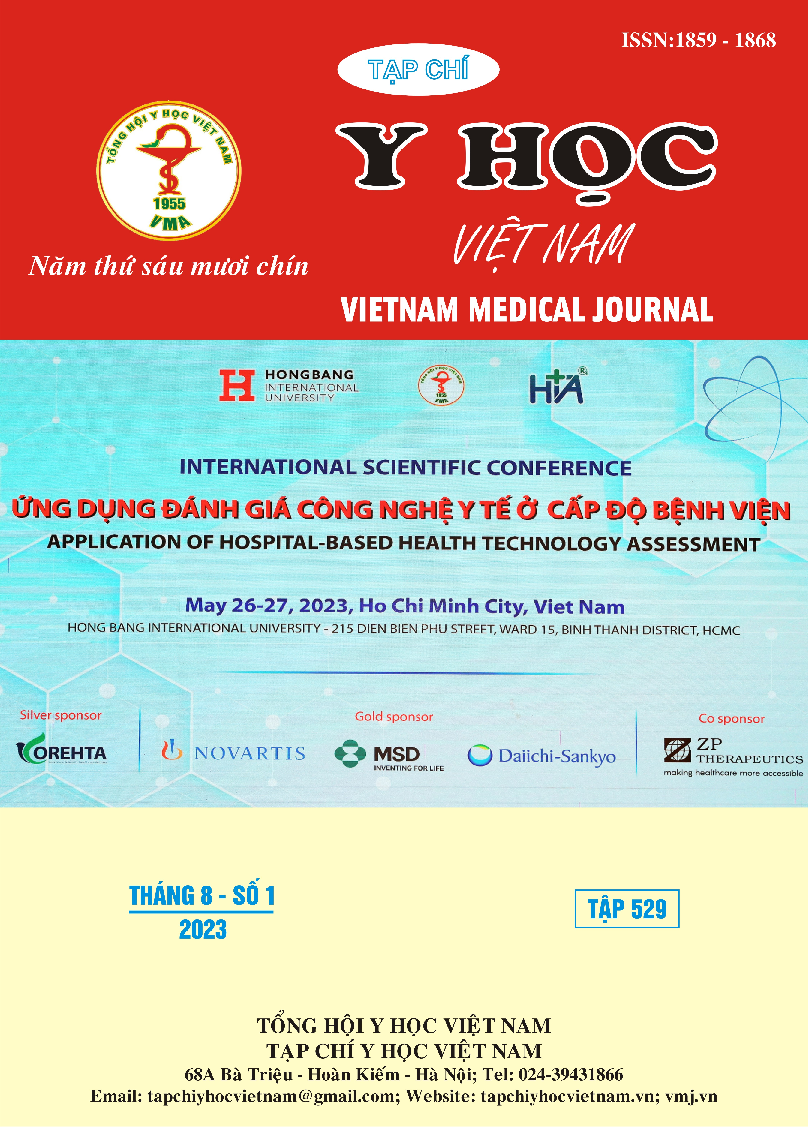CLINICAL AND PARA-CLINICAL FEATURES OF SILICONE SPONGE REJECTION AFTER RETINAL DETACHMENT SURGERY
Main Article Content
Abstract
Purpose: To describe clinical and para-clinical features of silicone sponge rejection after retinal detachment surgery. Materials and methods: The study was conducted on a data file of 21 patients (22 eyes) who were diagnosed with silicone sponge rejection. Results: Silicone extrusion registered the highest number with ten eyes (45.5%). The figures for eyes with pain and infection were six (27.3%) and four (18.2%). However, there was only one eye with erosion and intrusion; one eye with another cause (the fellow eye had erosion and intrusion before), and no eyes with anterior ischemic signs. In terms of the silicone removal time: only one case (5.0%) was classified early and required removal of the sponge within the first eight weeks following surgery, while twenty-one cases (95.0%) required sponge removal between five months and twenty years following surgery. In addition, the number of silicone sponges with non-blood staining was the highest, at 17 (77.3%). The figure for the sponge with blood staining was lower, at 5 (22.7%). After silicone sponge removal, two cases (9.1%) were recognized as retinal redetachment. Conclusion: Retinal detachment surgery with a silicone sponge has now been more and more prevalent due to its high effectiveness and success. Although silicone sponge rejection is at a quite low risk, it may also contribute to a number of severe consequences if left permanently. Silicone extrusion constitutes the highest figure in patients with silicone sponge rejection. Thus, regular follow-up and early detection of signs of silicone sponge rejection play a pivotal role in not only reducing the severe consequences but also attaining the anatomic function of the retina
Article Details
Keywords
silicone sponge rejection, retinal detachment
References
2. Lindsey PS, Pierce LH, Welch RB. Removal of scleral buckling elements: causes and complications. Archives of ophthalmology. 1983; 101(4): 570-573.
3. Roldán-Pallarés M, del Castillo Sanz JL, Awad-El Susi S, Refojo MF. Long-term complications of silicone and hydrogel explants in retinal reattachment surgery. Archives of ophthalmology. 1999;117(2):197-201.
4. Russo CE, Ruiz RS. Silicone sponge rejection: early and late complications in retinal detachment surgery. Archives of ophthalmology. 1971; 85(6):647-650.
5. Yoshizumi MO. Exposure of intrascleral implants. Ophthalmology. Nov 1980;87(11):1150-1154.
6. Oshima Y, Ohji M, Inoue Y, et al. Methicillin-resistant Staphylococcus aureus infections after scleral buckling procedures for retinal detachments associated with atopic dermatitis. Ophthalmology. 1999;106(1):142-147.
7. Lorenzano D, Calabrese A, Fiormonte F. Extrusion and infection incidence in scleral buckling surgery with the use of silicone sponge: to soak or not to soak? An 11-year retrospective analysis. European journal of ophthalmology. 2007; 17(3):399-403.
8. Bronner G, Zarbin MA, Bhagat N. Anterior ischemia after posterior segment surgery. Ophthalmology Clinics of North America. 2004;17(4):539-543, vi.
9. Deokule S, Reginald A, Callear A. Scleral explant removal: the last decade. Eye. 2003;17(6):697-700.
10. Lincoff H, Stopa M, Kreissig I. Cutting the encircling band. Vol 262006.


